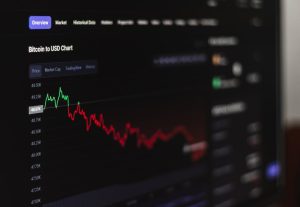The Role of Pip Count in Forex Risk Management
Forex trading is a highly volatile and risky market, where currency values fluctuate constantly. To navigate this market successfully, traders must have a solid understanding of risk management techniques. One crucial aspect of risk management in forex trading is the calculation and consideration of pips.
Pip, short for “percentage in point,” is the smallest unit of measurement in forex trading. It represents the fourth decimal place in currency pairs, except for the Japanese yen, where it represents the second decimal place. For example, if the EUR/USD currency pair moves from 1.2500 to 1.2501, it has moved by one pip. Understanding how to calculate and utilize pips is essential for effective risk management.
The primary role of pip count in forex risk management is determining the potential profit or loss of a trade. By knowing the pip value of a currency pair, traders can calculate the potential gain or loss in monetary terms. This information is crucial for setting stop-loss and take-profit levels, which are key risk management tools.
To illustrate this, let’s consider a hypothetical trade on the GBP/USD currency pair. Suppose a trader buys 1 lot of GBP/USD at 1.3000 and sets a stop-loss at 1.2950. In this case, the trader is risking 50 pips, as the stop-loss level is 50 pips below the entry price. By knowing the pip value of the GBP/USD, the trader can calculate the potential monetary loss if the trade hits the stop-loss level.
For instance, let’s assume the pip value of the GBP/USD is $10 per pip. With a 50-pip stop-loss, the potential loss would be $500 (50 pips x $10 per pip). This information allows the trader to assess the risk-reward ratio of the trade and make an informed decision.
Pip count is also crucial for position sizing, which is another essential aspect of risk management. Position sizing refers to determining the appropriate size of a trade based on the trader’s risk tolerance and account size. By calculating the pip value of a currency pair, traders can determine the position size that aligns with their desired risk level.
For example, if a trader is willing to risk 1% of their account on a trade and has a $10,000 account, they can use the pip value to determine the appropriate position size. Suppose the pip value of the EUR/USD is $1 per pip. With a 1% risk tolerance, the trader can risk $100 on the trade. By dividing $100 by the pip value ($1 per pip), the trader can determine that they can trade 100,000 units of the EUR/USD.
By utilizing pip count in position sizing, traders can ensure they are not risking more than they can afford to lose. This helps in preserving capital and avoiding significant losses that could have a detrimental impact on their trading account.
Furthermore, pip count is essential for setting take-profit levels. Take-profit levels represent the price at which a trader wants to exit a trade to secure profits. By calculating the potential profit in terms of pips, traders can set realistic and achievable take-profit levels.
For instance, if a trader is aiming for a 100-pip profit on a trade, they can set their take-profit level accordingly. By understanding the pip count, traders can set profit targets that align with their risk-reward ratio and trading strategy.
In conclusion, pip count plays a crucial role in forex risk management. By understanding and calculating the pip value of currency pairs, traders can assess potential profits and losses, determine appropriate position sizes, and set realistic take-profit levels. Incorporating pip count into risk management strategies is essential for successful and sustainable forex trading.






